LoBaron
Posts: 4776
Joined: 1/26/2003
From: Vienna, Austria
Status: offline

|
How To Orchestrate a Carrier Battle
Preface:
The recent discussion and complaints about CV engagements being random have convinced me to try my hand at another (air) guide focusing
on this aspect of WitP AE.
Just a few remarks on why such discussions seem so problematic (except that there are many of us running around with a big ego, not excluding myself here):
If such a discussion is wanted to be successful it does not make sense to add combat report after combat report to an existing thread just because
that thread is dubbed "borked CV battle". Instead one should open a new topic for every combat to discuss it without distraction.
People should refrain from randomly adding other battle results to the original one which is the center of a discussion.
If this is not done, those debates quick and easily get out of control.
It not hard to explain why: CV engagements are complex, and got a huge ammount of variables from where it is possible to "insert" mistakes.
Those mistakes often start long before the actual combat, one of the things I intend to show.
If a combat report gets added to a thread which already got a combat report under discussion, this new report usually contains - at least partly -
a wide variety of different root causes for a specific result completely different to the initial report. Also the new battle usually was the result
of a different motivation, environment, strategic overall situation, and initial setup. Result is that 15 topics are discussed at once, nobody knows
what the focus is on anymore, and explanations or quests for gameflaws end nowhere except in a babylonian-tower babble, where noone knows what the
other was referring to.
This was perfectly demonstrated by the recent discussion.
I would like to point this out beforehand, as I want to avoid any discussions on specific examples in this thread anyway. The best
way to do it is not to start at all. Comments on details on what I am trying to explain are very very welcome. I am for sure missing
many finer aspects and do not claim completeness. For those intersted in supporting my guide with comments and additions and ideas,
please do so, my thanks in advance.
Before I now try to concentrate on the relevant aspects of carrier battles in WitP AE, upfront I´d like to emphasise that, yes, there IS
a random element in the battles. What your aim should be is to minimize the impact of this random element as much as possible.
Also, there often is a grave misunderstanding what "random" means. From what I see, "random" is often used as "there are too many things that
can go wrong to get it right". I agree, you cannot get everything right, I experienced that myself many times.
Point is, you "only" need to get it MORE right than your opponent. You don´t need to get it perfect.
So lets start with the basics.
1) Preparing your carriers:
a) Pilot quality:
This should be obvious, but is still often neglected, also because there is the - false - assumption that stock carrier
pilots are automatically good pilots. They are not.
Look at the pilots assigned to the carrier airgroups. Think about what they are bound to do, and train them accordingly.
This is immensely important! It is not enough to simply train your DB pilots in navB, your TB pilots in NavT, and your fighter
pilots in Air skill. Those might be the primary mission relevant skills, but if you ignore the secondary skills you are putting
yourself at a severe disadvantage to an opponent who does.
I´d like to point out that training up pilots is always a tradeoff between training capacity and number of pilots needed.
You need to adapt. Just one thing: If you feel you need to accept lower quality due to pilot demand, do not automatically
assume that the opponent requires the same. If you need to use lower quality pilots, adjust the force calculations accordingly.
Those secondary skills are:
NavS: Every DB or TB pilot participating in a strike requires this skill maxed out. This actually is no secondary skill at all,
it is close to equally important than NavB/NavT. If you do not find your target, and if you are unable to max out the DL of your
target, you lose the CV battle! Train this skill up with as much enthusiasm as you would train NavB/T.
Def: This is nearly equally important, for fighter pilots as well as strike pilots. For an individual pilot this wont make so much
difference, as a successful air attack might kill the plane anyway, but it has a HUGE impact on strike survivability in the face
of CAP, and CAP survivability in the face of a strike. Def skill lets your opponent waste attacks, buys time, keeps your numbers up,
and so enables you to bring more strike planes over target, keep overal pilot morale up which drops significantly when a unit experiences
losse, and enables CAP pilots to survive and be available for another attack at an inbound strike.
If one player pays attention to that, and the other player does not, this makes the difference between a won and a lost carrier battle.
I cannot put enough emphasis on pilot skill. Many later war carriers arrive with mediocre pilots at best. This applies to both sides.
If you throw them into battle because you expect them to be already trained up anyway, or think that number alone will
compensate, think again. If relative carrier strenght is in balance, the quality of the pilots will be a major deciding factor.
For example USN CVE carriers arrive with squadrons that have average air skill around the med to low 50s, def skill around 30-40,
NavB/T skill around med to low 50, and NavS skill around 20-40. If you think this is enough, expect a lot of sunk carriers.
Similar applies to later war Essex carriers, and replacement squadrons. They are bad. And they are not ready for carrier battle.
Train them up before you send em to a target rich enviroment with teeth.
b) Upgrade your carriers, and all your ships you task as escorts:
Yes, it has been discussed often enough. AAA in stock scenarios is anemic at best, nonexistant at worst. It is better in DaBabes,
but don´t ask me by how much, I have not played it enough to form an opinion.
But this does not mean AAA sits there and does nothing. Even though it leaves a lot to be desired, upgraded AAA can mean the difference
between a lucky torp hit of the final 4 plane TB unit, or 2 damages, one exactly the TB that would have hit. Minimize "random", rememer?
Also, even if later war Allies usually got Radar overkill, simply stay on the safe side and have every major combatant, and every
DD with the most modern radar asset. You minimize chances of late detection. While it is probably already very low with a few
radar assets there is no reason not to reduce "low" to "insignificant".
c) Check your ship skippers:
The premier skill for anybody in command of a ship is naval skill, naval skill, and naval skill. Even for a CV captain, the premier
skill is naval skill.
The skipper needs to know how to maneuver a ship when the bombs start falling and the torp spreads their fingers, and the better
to evade one or the other eager SAG or sub attack. The higher his naval skill, the better he is at that.
Air skill is for the guys in planes or the squadron commanders, it does not help to drive a ship, or help the ship survive in a combat enviroment.
d) Check your plane upgrades:
I know this is tedious, and you want to go over that fast. But from personal experience - and personally I hate automatic plane
upgrades as they in general drain pools when you most need them - this tends to be neglected.
Look for the very best combination of modern plane types on your carriers.
Which not neccesarily means the most modern airframe for every mission type. Let me explain why:
What to upgrade to is a very important question, because there are two very important attributes relevant for carrier ops,
which often are neglected:
These attributes are cruise speed and service rating. I can only tell from the Allied perspective, as thats where my main
experience comes from, but assume the same is relevant for the IJN player.
Cruise speed is a coordination factor. The higher the delta between individual cruise speeds, the bigger the chance of a
fragmented strike. You want to avoid that at all costs for obvious reasons. Note that cruise speed varies notably between
the different a/c types - very often by upgrading one plane type to another you rip open a cruise speed delta between, for
example, fighters and DB´s, which could negate the positive effect of the upgrade.
Service rating is easily similar important. Service rating tells you about how long a plane needs to stand down for maintenance
and so results in how large a percentage of planes is still ready for operations after extensive use. Think this does not
matter for carriers? Then set the first version Helldiver (SR: 3) on naval search until the plane fatigue climbs up high.
Then stand down the unit and check the estimated repair times. You are in for an unpleasent surprize. Planes with high
SR are often outperforming planes with low SR (a good example is the SDB-5 compared to the early Helldiver), but
if you decide to high SR with more performance, pay attention to airframe fatigue and do not plan for extended operations
which require high mission frequency, and do not forget that NavS is a mission too and puts strain on the airframe.
Also if you use different aircraft of the same mission type (e.g. Dauntless/Helldiver), be aware of those differences and plan
accordingly. It is often of advantage to use more than one plane type, but it is important to keep in mind that in
critical situations it could lead to a fragmented strike - depending on your battle setup.
2) Deciding on when and how to do battle:
This is a very important part of the CV game, and was often underestimated by the losing side. There are several
factors flowing into the decision to accept or to avoid battle.
a) Know the global force relation:
Keep track of what is available to you, and what could/should be available to the opponent. This does not need to be precise
down to the exact number, a rough estimate usually is enough.
Why is this important? Because one of the real interesting parts of intel is not "what do I see?", but "what do I not see?".
If you got an estimate how many flightdecks the enemy has available, then based on your knowledge of the whereabouts of a part
of them can give you valuable information about the possible number of flightdecks in another area. Spotting a mini KB in the
IO lets you deduct the number of flight decks available to KB you suspect to be near the Marianas.
Besides this keep an eye out for upgrade dates for the specific carrier types, and arrival dates of the new carriers.
Again, a rough estimate is what you need.
Compare this to your available forces, and based on this decide if and how you need to set up the battle. Being the weaker force
does not neccesarily mean you should avoid battle. Only that you might need to adjust your expectations, and to decide
whether you need more support (e.g. by LBA or submarines) to keep force relations balanced.
If you do not do this, accept battle at your own peril. Just saying "it is ´45, the IJN carriers should not be able to hurt me anymore",
ist the best start to lose a battle.
b) Know the qualitative force relation:
This might look insignificant when looking at numbers of flight decks initially, but it is not. Plane quality
is a deciding factor in a battle - ever seen an IJAAF contingent mauled by Tbolts? - and some plane attributes can make
a significant difference in the air battle or the attack run against the carriers.
There are certain dates where relative quality between Japan and the Allies moves in one or the other direction.
In some instances this change is significant and, neglected, can lead to seriousely different outcomes than expected.
That said, there is a small advantage for the Japanese player: The Allied production numbers are static, and have
fixed start dates. In comparision the Japanese player is able to influence the numbers as well as the start types
of planes produced. Even so, only rough estimates are possible anyway, but those should be taken into account.
I will not list all significant events here, but I will show a few simple examples just to support my point:
IJN:
- Change from Val to Judy: Need I say more? This makes the difference between a 250 and a 500kg hit on your flight deck.
- Change from A6M5c to A7M2: Also not much to add to the obvious, change from a mediocre - at best - fighter to a
rocket with 3220ft/min climb and a max speed of 392kts. Say goodby to Hellcat superiority.
Allies:
- Change from F4F-4 to F6F-3: Must be the same party feeling to the USN pilots as the A6M5c upgrade was to the IJN fighter puke.
- Change from SBD-3 to SB2C-1C: Cool lets keep that 1000lb bomb but get 2 250lb for free!
- Change from TBD-1 to TBF-1: Ok, I guess I don´t need to tell anybody about what this meant to the USN.
There are more examples than that, but I guess you get the picture.
Those plane upgrades change the force balance significantly, not by numbers but quality and the ability to deliver ordinance.
Attempt to time your carrier operations with those upgrades in mind. And be aware your opponent will most probably do the same.
c) Know the local force relation:
This is, obviousely, a bit more specific as the global relation. When you select an are to do battle, optimally you should have
already a good global estimate ("what do I not see?") and a good local part ("what do I see?"). This can only be achieved by tedious
work through the intel reports, naval search, submarine spottings and local base recon. Be aware that a good opponent will
always attempt to hide exactly this data from you so this is basically where the cat and mouse game begins.
Personally I find this aspect of the game one the most interesting, players who play it with a love for detail have less
tendency to run headlong into full scale desaster and have good chances to outguess and outplay the opponent.
Basically what you need to estimate is what the opponent can bring there in time of your planned op. The longer your
op is bound to take, the more unprotected assets from your side need to rely on (CV) protection, the closer the location
of the op is to the opponents line of defense, and the further the loacation of the op is away from your own line of support,
the more likely the opponent will intervene, the larger the opposing forces are you will have to deal with, the more threat
dimensions (e.g. sub, SAG, mines, LBA, CV groups,...) you will need to deal with, and so the more in your favor the initial
force relation needs to be to have a plausable chance of coming out on the bright side of the battle.
d) Take force attrition into account:
This is actually an extension of b), attrition begins at the moment a CV group begins to conduct flight operations to
fulfill the mission requirements, always with the result of weakening the overall combat power and ability to perform
maximum effort strikes of your carriers. Attrition in battle always favours the side who has either shorter operational
timespan, or more assets with combat capability, or a simpler/shorter logistic chain.
Pay attention, this is essential: Using a carrier armada to support and defend a large invasion in the face of LBA threat, and
then expecting the same carriers - a week afterwards - to win a battle against a fresh and rested enemy carrier group that is
not completely understrenght compared to your forces, is dumb, to use the most friendly word that comes to my mind.
Morale and fatigue are extremely important values in such engagements.
If you are unable to rule out the appearence of strong enemy carrier forces while you are protecting an invasion with your fleet
carriers and need to ground attack, airfield attack, LRCAP and cAP against LBA and waste your AAA ammo against the same, need
to deal with surface assets, pay attention to the sub menace, and in general get your forces weary and tired by the daily attacks,
then do one thing of three:
- Set up dedicated mission specific carrier groups, one part with the landing support mission and one part to engage enemy carriers
(but know that by making this split you also weaken your raw combat power) - but we will come back to this later anyway.
- RUN
- Or chose an easier target for an invasion in the first place. Simple as that.
Moving headlong into a carrier desaster because your mighty highly fatigued invasion protection force that supported groundhoggers
for days was ambushed by fresh elite aircrews launched from carriers out of nowhere, and mauled accordingly, is not funny.
But it is a mistake. Not a "random event not under control by the player".
e) Use all assets available:
A carrier battle only fought by carriers is the worst possible way to do it.
Better have subs with your carriers to intercept approaching enemy carriers and sink cripples after battles.
Even better have surface action groups supporting you that can either thwart enemy SAGs, pose a threat to enemy
carriers, or act as a deterrence for your own flattops.
And the best is if you operate in range of your own LBA. Nothing can ruin a day for the enemy nicer than a CV
engagement salted with a couple of medium attack bombers making runs at sealevel.
This has more advantages than just improving your own numbers. It gives the opponend much to worry about, and a
worried opponent makes more mistakes, is bound to lose focus on his primary mission because he wants to deal with
too many threats at once, and usually takes longer to engage.
This concludes the theoretical assets of preparing for carrier battles. I will add a second part to address the practical
aspects of the engagements, but it already took me a bit to write this, so maybe it will take another couple of days
before I update with the next chapters.
Planned for the next update (what I further intend to cover):
Battle location, Set up your carrier task forces, Set up your air groups, The eve of battle, Game engine peculiarities to be aware of,
Licking Wounds.
This might take a whole though to put it up, simply because my life is pretty crowded at the moment, so
I cannot in advance say when, but I hope soon.
I hope you enjoyed the read up to now, if you have any proposals how to expand the guide, please go ahead.
< Message edited by LoBaron -- 12/6/2012 9:33:13 PM >
_____________________________
|
 Printable Version
Printable Version








 Just kidding.
Just kidding.
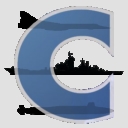
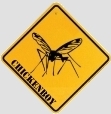

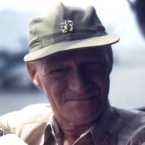

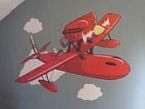



 This affects Kami attacks also ...
This affects Kami attacks also ...




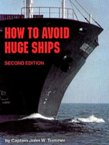

 New Messages
New Messages No New Messages
No New Messages Hot Topic w/ New Messages
Hot Topic w/ New Messages Hot Topic w/o New Messages
Hot Topic w/o New Messages Locked w/ New Messages
Locked w/ New Messages Locked w/o New Messages
Locked w/o New Messages Post New Thread
Post New Thread